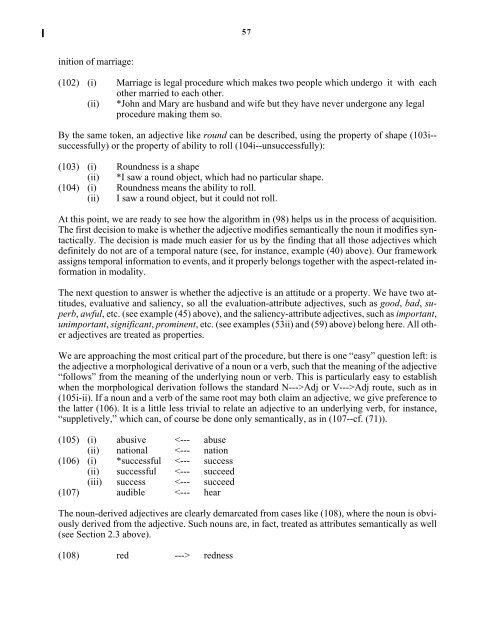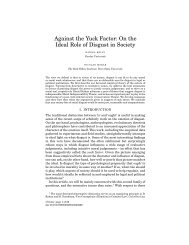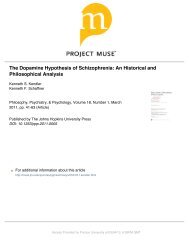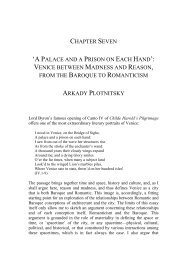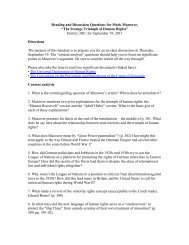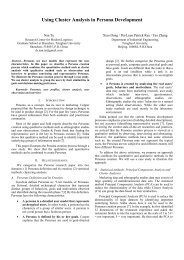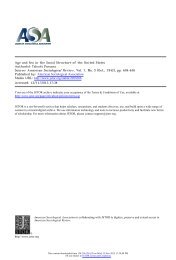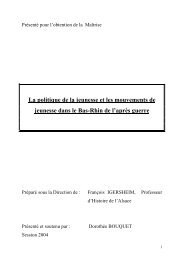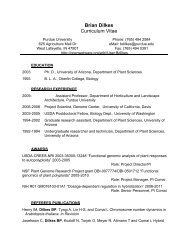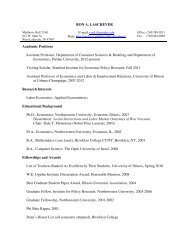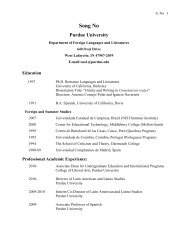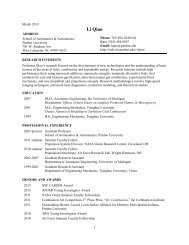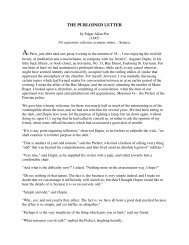Lexical Semantics of Adjectives - CiteSeerX
Lexical Semantics of Adjectives - CiteSeerX
Lexical Semantics of Adjectives - CiteSeerX
You also want an ePaper? Increase the reach of your titles
YUMPU automatically turns print PDFs into web optimized ePapers that Google loves.
inition <strong>of</strong> marriage:<br />
57<br />
(102) (i) Marriage is legal procedure which makes two people which undergo it with each<br />
other married to each other.<br />
(ii) *John and Mary are husband and wife but they have never undergone any legal<br />
procedure making them so.<br />
By the same token, an adjective like round can be described, using the property <strong>of</strong> shape (103i-successfully)<br />
or the property <strong>of</strong> ability to roll (104i--unsuccessfully):<br />
(103) (i) Roundness is a shape<br />
(ii) *I saw a round object, which had no particular shape.<br />
(104) (i) Roundness means the ability to roll.<br />
(ii) I saw a round object, but it could not roll.<br />
At this point, we are ready to see how the algorithm in (98) helps us in the process <strong>of</strong> acquisition.<br />
The first decision to make is whether the adjective modifies semantically the noun it modifies syntactically.<br />
The decision is made much easier for us by the finding that all those adjectives which<br />
definitely do not are <strong>of</strong> a temporal nature (see, for instance, example (40) above). Our framework<br />
assigns temporal information to events, and it properly belongs together with the aspect-related information<br />
in modality.<br />
The next question to answer is whether the adjective is an attitude or a property. We have two attitudes,<br />
evaluative and saliency, so all the evaluation-attribute adjectives, such as good, bad, superb,<br />
awful, etc. (see example (45) above), and the saliency-attribute adjectives, such as important,<br />
unimportant, significant, prominent, etc. (see examples (53ii) and (59) above) belong here. All other<br />
adjectives are treated as properties.<br />
We are approaching the most critical part <strong>of</strong> the procedure, but there is one “easy” question left: is<br />
the adjective a morphological derivative <strong>of</strong> a noun or a verb, such that the meaning <strong>of</strong> the adjective<br />
“follows” from the meaning <strong>of</strong> the underlying noun or verb. This is particularly easy to establish<br />
when the morphological derivation follows the standard N--->Adj or V--->Adj route, such as in<br />
(105i-ii). If a noun and a verb <strong>of</strong> the same root may both claim an adjective, we give preference to<br />
the latter (106). It is a little less trivial to relate an adjective to an underlying verb, for instance,<br />
“suppletively,” which can, <strong>of</strong> course be done only semantically, as in (107--cf. (71)).<br />
(105) (i) abusive


